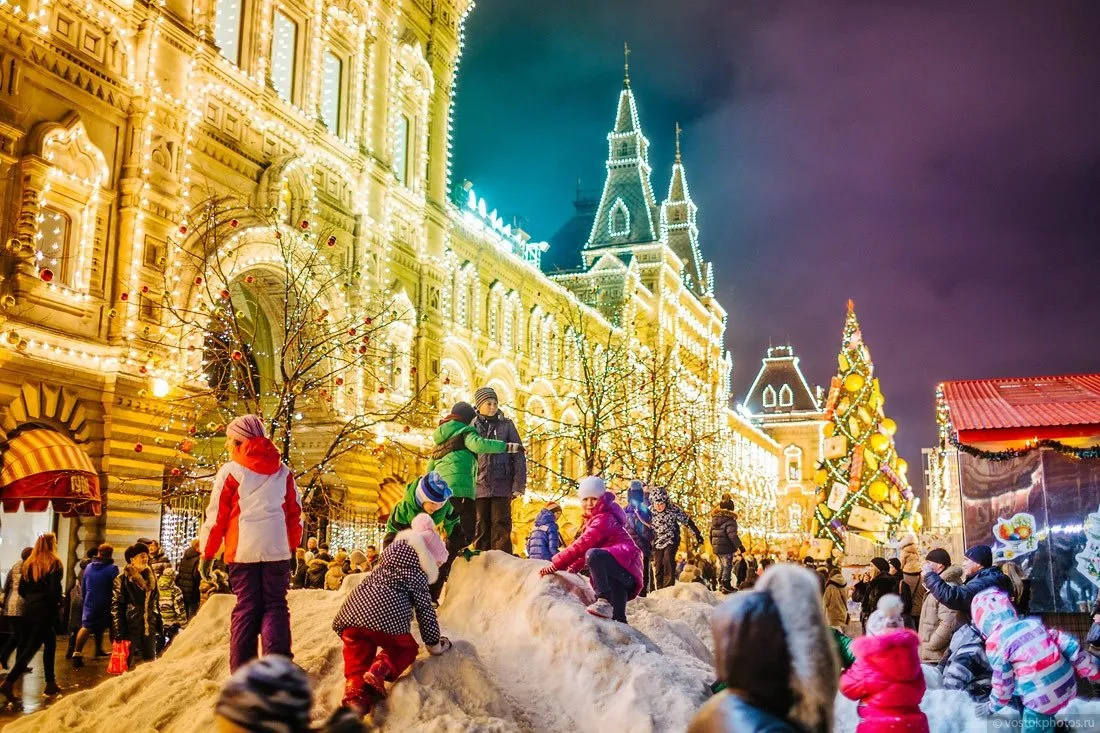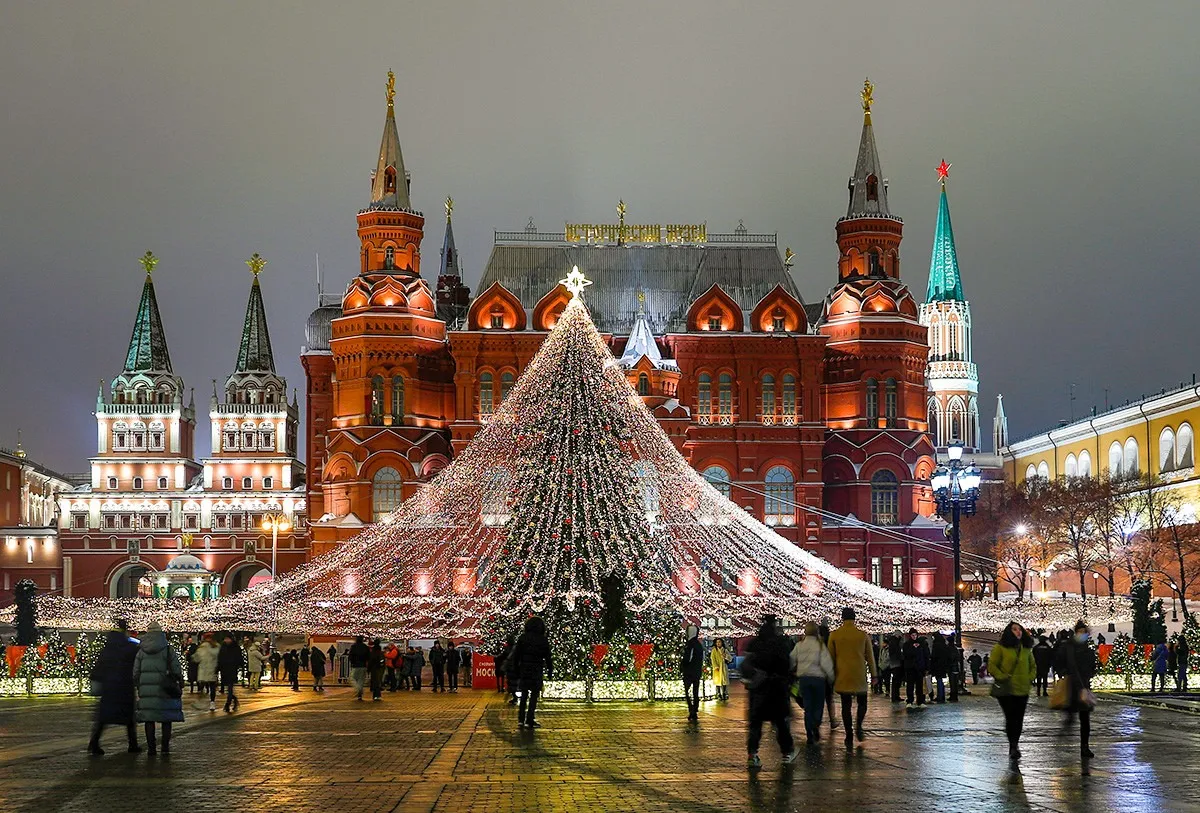Welcome to a vibrant journey through the heartwarming world of Russian Christmas traditions! While Christmas may be celebrated around the globe, Russia brings its unique flair to the festive season, blending rich cultural customs with deep-rooted religious practices. From the beautifully lit churches that stand as beacons of Orthodox Christianity to the cozy family gatherings filled with delicious, traditional foods, Russian Christmas is a beautiful tapestry of history and joy.
Whether you’re looking to learn more about this fascinating celebration or perhaps even incorporate some Russian customs into your holiday traditions, you’re in for a treat. Let’s unwrap the magic and mystery of how Christmas is celebrated in the largest country in the world with nationalparkshops’s team!
What day is Russian Christmas celebrated?
Thirteen days after Western Christmas, the Russian Orthodox Church observes its Christmas on January 7th, based on the ancient Julian calendar. This day is marked by both solemn rituals and joyful festivities.
After the Revolution of 1917, Christmas, along with other religious celebrations, was prohibited in Russia. It was not until 1992, 75 years later, that the holiday was openly celebrated again. Nowadays, it is commemorated grandly, with believers attending an all-night Mass in incense-filled cathedrals surrounded by painted icons of Saints.
Russian Christmas tradition is one of the most beloved traditions, particularly the celebration of Christmas Eve, which comes from Russian customs. On this evening, it is customary for all family members to gather and enjoy a special meal together. The foods and practices associated with this meal varied across Holy Russia from village to village and family to family, although some elements remained consistent.

How do Russian people celebrate Christmas?
In the Orthodox church, the Advent period extends for 40 days, starting on November 28 and concluding with the Christmas festivities on January 7. While it is quite rare for Orthodox Christians to observe Christmas on December 25, some Catholic or Protestant families do celebrate it on that date.
Russian Christmas traditions
During the Soviet Union era, religion was suppressed or prohibited, leading to Russians celebrating Christmas only secretly at home for many years. In response to public discontent over the loss of their holiday, the government merged several Christmas customs into New Year celebrations. As a result, people began decorating New Year trees and exchanging gifts for an extended period. Nowadays, both New Year and Christmas are observed, with New Year remaining the more significant celebration. This is a Russian Christmas tradition.
There have been attempts in court to prevent Christmas from being recognized as a public holiday, arguing that it violates the constitutional separation of church and state in Russia. However, these efforts were unsuccessful, and Christmas continues to be a day off for many people. The traditions linked to Christmas still emphasize its significance in the church calendar, leading to activities that focus more on family gatherings and religious practices.

Russian Christmas food
Christmas Eve holds significant importance for religious families preparing for Jesus’ arrival. Traditionally, individuals would either refrain from eating entirely or limit their food intake until sunset after church services. After sunset, they would enjoy a dish called Sochivo, made from grains like wheat, rice, or lentils, sweetened with honey, and mixed with seeds and nuts. The association of Sochivo with Christmas Eve is so strong that one term in Russian for the Christmas Eve feast originates from it.
Regardless of whether Sochivo is present, there is considerable feasting on Russian Christmas traditions Eve, with some Orthodox Christians opting for a fully vegetarian meal. In certain Slavic nations, this meal is referred to as Holy Supper, rich with symbolic meaning. Typically, there are 12 dishes served, symbolizing the 12 disciples. Common offerings include beetroot soup, a vegetarian stew, and cold dishes such as potato salad or pickles. The table is adorned with a white cloth, representing the swaddling clothes of baby Jesus, and hay may be placed on the floor beneath the table to commemorate Jesus’ birth in a stable.
On Christmas Day, another grand feast takes place, featuring meat as a key element. Roast goose with apples is often served, along with meat-filled dumplings or other dishes.
New Year’s Eve, which precedes Christmas in the Orthodox tradition, is another celebration characterized by its own unique dining and drinking customs. If you host a gathering, you will prepare an extensive buffet of small dishes known as zakuski (snacks), similar to tapas. The food includes caviar and pickles, presented in bite-sized portions consumed alongside shots of vodka and festive toasts.

Christmas Gifts in Russia
In Russian Christmas traditions, gifts are delivered by Дед Мороз (Grandfather Frost), who resembles a Slavic version of Santa Claus but is typically depicted in a blue coat instead of red. He is often seen with his granddaughter, Снегу́рочка (the Snow Maiden). Both figures gained popularity in imperial Russia prior to the establishment of the Soviet Union and were later included in the Soviet celebration of New Year. For many years during the Soviet era, Grandfather Frost and the Snow Maiden would attend children’s New Year festivities to distribute presents.
Some Russian families exchange gifts on Christmas, while others prefer to maintain the custom on New Year’s Day. With multiple holidays occurring simultaneously, many gifts are purchased throughout the season. If you’re considering a gift for a Russian friend, widely accepted options include wine or a good quality bottle of liquor are safe bets.

Christmas decorations
To enhance the festive and immersive feeling of Christmas, Russians frequently adorn their homes and apartments with decorations like fairy lights, stars, and angel-shaped cutouts. Naturally, the Russian Christmas tree, a key symbol of the holiday, decorates the homes of many Russians.

Russian Christmas Traditions: Christmas Fortune-Telling
Although the Russian Orthodox Church disapproves of fortune-telling, this practice dates back to pagan traditions in Russia. Only young, single women participated in these rituals. They would gather in a house or at a Russian sauna known as banya (баня). Dressed only in nightgowns with their hair down, the women began their fortune-telling rituals. One aspect of these practices involved Zagavory (заговоры), which are verbal rituals intended to bring prosperity to families.
In contemporary Russia, various popular forms of fortune-telling exist, such as tarot card reading, divination using coffee grounds, and reading tea leaves. One of the most common methods is rice fortune-telling:
A candle is lit, and a bowl filled with rice is placed in front of the individual. After posing a question or making a wish, the person dips their hand into the bowl and retrieves a handful of rice. They then count the number of grains they collected: if it’s an even number, the wish is likely to come true soon; if it’s an odd number, the wish may not be fulfilled, one should avoid accepting offers, or wealth should not be expected. Fortune-Telling is a popular Russian Christmas tradition.
Fun Facts about Russian Christmas Traditions
Here are some fun facts about Russian Christmas traditions presented in bullet points:
- Celebration Date: Christmas is celebrated on January 7, following the Julian calendar.
- Traditional Meal: Russians enjoy a 12-course meal on Christmas Eve, symbolizing the twelve apostles, with Kutya (a porridge made from honey, barley, and poppy seeds) as a central dish.
- Unique Decorations: Instead of a traditional Christmas tree, Russians decorate a New Year’s Tree (Novogodnaya Yolka) with sun ornaments and wooden toys.
- Folklore and Superstitions: Unmarried women who fast and stand at crossroads after church may see their future husbands in dreams.
- Ded Moroz and Snegurochka: The Russian Santa Claus is Ded Moroz (Father Frost), accompanied by his granddaughter Snegurochka (the Snow Maiden).
- Caroling Tradition: Children go caroling, singing traditional songs called kalyadki, and receive treats from families.
- Historical Context: The celebration blends ancient pagan customs with Christian traditions, with Christmas Eve known as Sachyelnik, named after the dish sochivo.
FAQs
What is a Russian Christmas tree called?
The yolka, which had been relegated to the past only a few years prior, returned in 1935 when top officials persuaded Joseph Stalin that the tree could serve as a representation of joy and abundance for Soviet children during a non-religious celebration.
How does Russia say “Merry Christmas”?
To wish someone “Merry Christmas” in Russian, you can use “С Рождеством” or “Счастливого Рождества”:
- С Рождеством: Pronounced as “S Rozh-deh-stvOm”
- Счастливого Рождества: Pronounced as “Schas – lI – vo -va Ra zh – dest – vA”
If you want to convey happy holiday wishes, you can say “Наслаждайтесь праздниками!” (Naslazhdaytes’ prazdnikami!). This expression is also suitable for secular friends who may not celebrate Christmas but observe a holiday during this season.
What is Santa Claus called in Russia?
In Russia, Santa Claus is known as Ded Moroz, which translates to “Grandfather Frost” or “Father Frost.” He is a legendary figure associated with winter and New Year’s celebrations, distinct from the Western Santa Claus. Ded Moroz typically brings gifts to children during the New Year festivities rather than on Christmas, which is celebrated on January 7 in Russia. He is often accompanied by his granddaughter, Snegurochka (the Snow Maiden), who helps him distribute presents.
Ded Moroz is depicted wearing a long fur coat and a fur hat, and he travels in a traditional Russian sleigh called a troika, pulled by three horses. Unlike Santa Claus, who delivers gifts secretly, Ded Moroz often makes public appearances at holiday events and parties. His character has evolved over time, originally rooted in Slavic mythology and later adapting to Soviet cultural changes. Today, he remains a beloved figure in Russian Christmas traditions.

